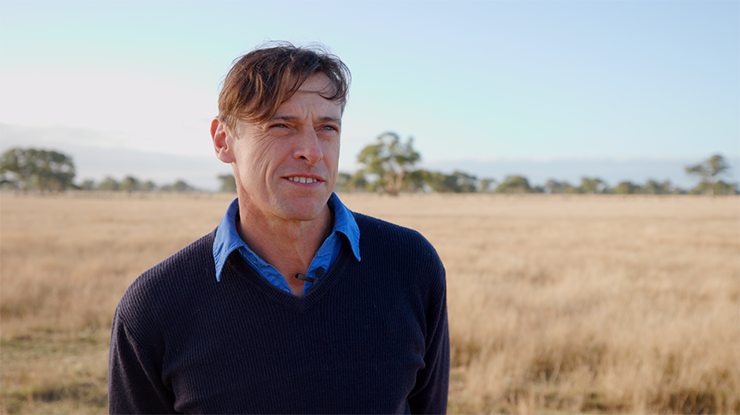Quick ewe assessment key to boosting lamb survival
26 October 2022
 Above: Victorian producer Nick Harvey.
Above: Victorian producer Nick Harvey.
With ewe survival rates in check, Nick Harvey was looking for ways to further improve lamb survival among his flock.
“I’d hit a ceiling with my lamb survival rates and I was looking for ways to improve them, which is how I became involved in the ‘Fit to join’ project,” Nick said.
Nick joins 11,000 first-cross and composite ewes to composite and Dorset rams on his property, ‘Strathdownie Estate’ in Strathdownie, Victoria. Joining starts on 3 January for lambing to start on 1 June, and Nick follows a feeding regime of pasture supplemented with low levels of grain during late autumn.
“Before participating in the ‘Fit to Join’ project, I did minimal culling of my flock ewes as I was trying to build flock numbers,” Nick said.
“For the minimal culling I did do, I culled based on ewe condition score and teeth. I’d cull if they were old, in light condition or had poor teeth.
“I’d only cull ewes that I believed weren’t going to be profitable for the next 12 months.”
Now, Nick has expanded his criteria to assess whether ewes are ‘fit to join’ - and he’s found that adding one quick check has had a huge impact on productivity.
Big impact on lamb survival
A key learning from the project was the effect of assessing the ewe’s udders had on lamb survival rates.
“We found for every 100 ewes there were 32 more lambs marked than the ewes who were unfit because of udder problems,” Nick said.
“Once we cleaned up the poor udders, the lamb survival rate went up considerably.”
Simple process
According to Nick assessing the udders is a quick and simple process which reaps results.
“I couldn’t believe how quick and easy it was to assess the udders and get such good results. All you need to do is follow the instructions and cull accordingly,” Nick said.
“I do the udder assessment along with mouthing in October/November whilst we are shearing, it only adds a bit of extra time to a job you already have to do.”


